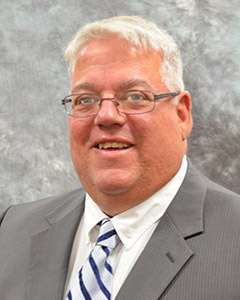Emergency medical services (EMS) in rural America are in a state of crisis. Difficulty recruiting emergency medical technicians (EMTs) and the financial constraints of EMS agencies are the major causes of this crisis.
Many rural areas are considered medically underserved (MUAs), indicating too few primary care providers, high infant mortality, high poverty or a high elderly population. Most of the MUAs are also designated as rural or frontier, increasing the likelihood of prolonged transport times to hospital-based medical care. Rural and frontier MUAs are historically served by volunteer EMS services. For example, in South Dakota 73 percent of EMS agencies utilize volunteers. In 2016, 32 percent of volunteer agencies reported missing calls due to staff shortages. These conditions have led to a disparity in mortality rate for traumas for rural residents.
An ad hoc group comprised of the University of South Dakota School of Medicine, South Dakota State Medical Association, Northeast and West River Area Health Education Centers (AHEC), Sanford Academic Affairs EMS Outreach, and Community Memorial Hospital in Redfield has received funding through the U.S. Department of Labor, and from the Substance Abuse and Mental Health Services Administration to combat the EMS crisis in South Dakota and improve health outcomes for rural residents.
In many states, grant money is available to cover the cost of attending EMT training available through your medical schools and health systems. Often the online classes can be completed by the student at home, while the hands-on portion may require weekend travel.
Members of the South Dakota ad hoc group developed the Dakota Responder class curriculum, the goal of which is to train more people. Through a unique collaboration with Agtegra, a farmer-owned grain and agronomy cooperative with more than 6,300 members-owners in eastern North and South Dakota, the Dakota Responder classes will initially be made available to Agtegra employees. Those who attend the classes will be trained to provide emergency care for serious bleeding, opioid overdose, and use of automatic defibrillators. Agtegra employees located in rural areas of the Dakotas are well-positioned to provide life-saving care until EMS personnel arrive on scene.
Ultimately, the goal is to increase the number of trained EMTs to staff rural EMS centers and improve emergency response times. Learn more about EMS in your community. Share this information with your neighbors and contact your legislators and county commissioners to urge their support for local EMS centers where you live.
Matthew Owens, M.D. practices family medicine in Redfield, South Dakota. He is a contributing Prairie Doc® columnist and a guest this week on the Prairie Doc® television show. For free and easy access to the entire Prairie Doc® library, visit www.prairiedoc.org and follow Prairie Doc® on Facebook featuring On Call with the Prairie Doc® a medical Q&A show streaming on Facebook most Thursdays at 7 p.m. central.




